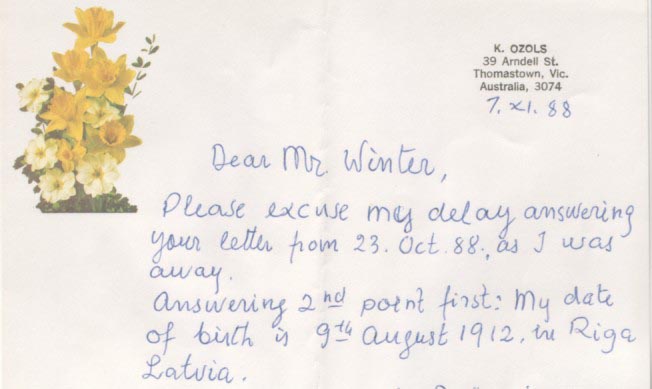
Edward Winter
Harrowing charges of Nazi war crimes have been levelled against a chess master who participated in the Kemeri, 1937 tournament alongside such figures as Alekhine, Fine, Flohr, Keres, Reshevsky and Tartakower. A densely-documented 12-page report by Zandy Alter and Michael Kapel in The Australia/Israel Review Vol. 22 No. 14 (1-22 October 1997) states that Karlis Ozols ‘executed thousands of Jews and liquidated entire Latvian villages during World War II’. Among the specific claims are that on 1 July 1941 he joined the Latvian Security Police in Riga; that in early 1942 he was trained at Fürstenberg (Germany), an establishment run by the Sicherheitsdienst (the security service of Himmler’s SS); that he commanded a unit of about 100 Latvians which, between 24 July 1942 and 27 September 1943, assisted in the transportation, guarding and execution of Jews; that between July 1942 and September 1943 over 10,000 Jews from the Minsk ghetto were murdered, with Ozols personally carrying out some killings; that on 8-9 February 1943 Ozols and 110 Latvians under his command assisted the SS to kill more than 2,000 Jews of the Slutz ghetto. ‘The killings [open-air shootings and gas vans] were efficiently organized. Orders directly from Hitler were passed down the SS hierarchy to the Latvian officers under their command.’ On 20 April 1944 Ozols was promoted to the rank of Obersturmführer and was decorated with the KVK II (Kriegsverdienstkreuz – the War Merit Cross). The following December, he disappeared.
Here we offer an overview of the chess career of Karlis Alexandrs Ozols, who was born in 1912. The birth-date given in standard chess sources is 9 October (Gregorian calendar), but in a letter to us dated 7 November 1988 Ozols wrote:
‘My date of birth is 9th August 1912, in Riga, Latvia.’

Subsequently, in C.N. 2876, we noted that a short article by Ozols entitled ‘Learning an Opening System Through Correspondence Chess’ on pages 21-23 of ASPC’s Guide to Correspondence Chess (edited by Maurice Carter in 1981) began:
‘I was born in Riga, Latvia on September 8 1912.’
We commented that confusion had apparently arisen between 9/8 and 8/9.
Sometimes it is stated (e.g. in a feature on him on pages 288-289 of the 1 December 1949 issue of the Australian magazine Chess World) that he learned the moves of chess at 15 and that two years later he drew against Emanuel Lasker in a simultaneous display, but it has not proved possible to find details. A further two years on, he was already competing in the Latvian Championship, finishing fifth. He studied Law at the University of Riga.
Ozols was a member of the Latvian team at the Munich Olympiad in
the summer of 1936. It came sixth out of 21. Kurt Richter’s
two-volume work on the event gave none of Ozols’ games but
recorded that he scored +7 –1 =7. One game, his loss (to Balogh of
Hungary), appeared in a smaller book on the Olympiad, Olympische
Blitzsiege by E.J. Diemer (published in Kecskemét in 1936).
The following score was presented in C.N. 2785, from pages 187-188
of Šachs Latvijā by K. Bētiņš, A. Kalniņš and V. Petrovs
(Riga, 1940):
K. Salbu (Norway) – Karlis Ozols (Latvia)
Munich Olympiad, 21 August 1936
Queen’s Pawn, Bogoljubow Defence
1 d4 Nf6 2 c4 e6 3 Nf3 Bb4+ 4 Bd2 Qe7 5 a3 Bxd2+ 6 Nbxd2 d6 7 e3 Nbd7 8 Qc2 e5 9 d5 a5 10 b3 O-O 11 Be2 g6 12 O-O Nh5 13 b4 b6 14 bxa5 Rxa5 15 Nb3 Ra8 16 a4 Nc5 17 Nxc5 bxc5 18 a5 f5 19 Rfe1 g5 20 Nxe5 Qxe5 21 Bxh5 g4 22 f3 Qe7 23 fxg4 fxg4 24 h3 gxh3 25 e4 Qh4 26 Bf3 Rxa5 27 Rac1 Qg3 28 Re3 Bg4 29 Rf1 Bxf3

30 Qe2 h2+ 31 Kh1 Bxg2+ 32 Qxg2 Qxg2+ 33 Kxg2 Rxf1 34 White resigns.
Tracing photographs of Ozols from the 1930s is also difficult. The one given below was published (small format, poor quality) on page 250 of Schackvärlden, August 1937:
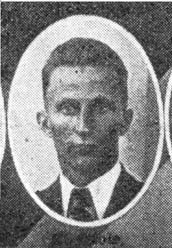
Kemeri, 1937 was Ozols’ most testing tournament, an event in which Flohr, Petrovs and Reshevsky came joint first, ahead of Alekhine and Keres. Ozols shared last place with Hasenfuss, whom he beat in their individual game:
Karlis Ozols – Wolfgang R. Hasenfuss
Kemeri, June 1937
Dutch Defence
1 c4 f5 2 Nf3 Nf6 3 g3 e6 4 Bg2 d5 5 O-O c6 6 b3 Be7 7 Bb2 O-O 8 d3 Nbd7 9 Nbd2 Qe8

10 e4 (Beginning a rare instance of the Excelsior theme.) 10...Nc5 11 e5 Nxd3 12 exf6 Nxb2 13 fxe7 Nxd1 14 exf8(Q)+ Qxf8 15 Rfxd1 Qf6 16 Re1 Bd7 17 Ne5 Be8 18 f4 Rd8 19 Ndf3 h6 20 h4 Kh7 21 c5 a5 22 Rac1 Bh5 23 Kf2 Qe7 24 Nd4 Qf6 25 Bf3 Bf7 26 Ke3 Bg8 27 Bh5 g5 28 hxg5 hxg5 29 Rh1 Kg7 30 Rh2 g4 31 Rch1 Qe7 32 Bf7 Qxc5 33 Kd3 Qb6 34 Nxe6+ Kf6 35 Nxd8 Bxf7 36 Nd7+ Resigns.
Source: Das Grosse Internationale Schachmeisterturnier zu Kemeri in Lettland 1937 (published in Riga, 1938), pages 114-115. Elsewhere (page 210) the book commented: ‘Ozols is a good strategist and expert on the openings, but his tactical play still leaves much to be desired.’
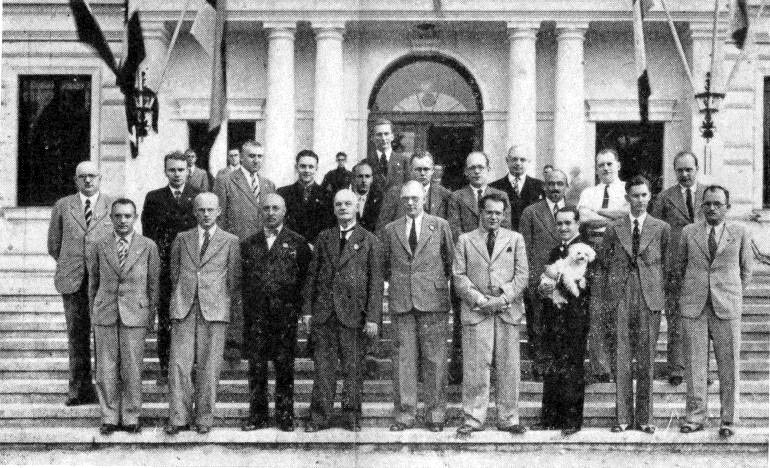
Kemeri, 1937. Front row from left
to right: V. Petrovs, F. Apscheneek, A. Melnbārdis, K.
Bētiņš, H. Kmoch, S. Landau, S. Flohr, P. Keres, E.
Steiner.
Behind: J. Kalniņš, E. Giese, P. Ķeirans, V. Mikenas, M.
Feigins, K. Ozols, L. Rellstab, E. Böök, S. Tartakower,
A. Kanenbergs, A. Alekhine, G. Ståhlberg.
Shortly afterwards, he represented Latvia in the 1937 Olympiad in Stockholm, scoring +2 –5 =3. His best-known game was against Peter Reid of Scotland, which he won in eight moves, despite overlooking the win of a piece at move seven. The score may be found on page 157 of A. Földeák’s Chess Olympiads and on page 109 of W.H. Cozens’ The Lost Olympiad. Reid died about two years later, aged 27, in a Skye climbing accident (BCM, September 1939, pages 396-397).
Ozols’ name more or less vanished from chess periodicals until after the War, when he played in a few tournaments in Germany for ‘displaced persons’ (to use the term in CHESS, January 1948, page 89). These events included the Mattison Memorial Tourney in Hanau (near Frankfurt) in 1947, which was won by his fellow Latvian Endzelins, ahead of Zemgalis, Bogoljubow and Hönlinger. Ozols was equal fifth.
His decision to settle in Australia was announced on page 159 of the 1 July 1949 Chess World (a magazine edited by one of the finest of all chess writers, C.J.S. Purdy). The 1 September 1949 number (page 208) reported that Ozols had joined the Melbourne Chess Club, and the 1 December 1949 issue (page 288) presented a photograph of him, together with the crosstable of the Championship of Victoria, which he had just won with a score of +9 –0 =1. ‘Ozols has developed a very solid style in the post-war years; like any master, he can be combinative when he likes.’
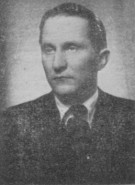
Karlis Ozols
In all, Ozols won the Championship of Victoria nine times between 1949 and 1971, as is shown by the table on page 55 of Care for a Game – The Story of Melbourne Chess Club by Robert Brooking, a booklet published in the mid-1980s. He also won the Australian Open Tournament in Melbourne in 1949-50 and 1951-52, as well as, jointly, the Australian Championship in 1956-57. He became a naturalized Australian citizen on 17 October 1956.
A selection of his most interesting games follows.
Karlis Ozols – Cecil John Seddon Purdy
New South Wales v Victoria match, 14 October 1950
Irregular Opening
1 Nf3 d5 2 g3 g6 3 Bg2 Bg7 4 d4 c5 5 dxc5 Na6 6 c4! d4!? 7 c6! Rb8! 8 cxb7 Bxb7 9 Qa4+ Qd7! 10 Qxd7+ Kxd7 11 O-O e5 12 Nbd2 Ne7 13 Nb3 Rhc8 14 Nfd2 Bxg2 15 Kxg2 Nf5 16 Rd1 Ke6 17 Ne4! Rxc4 18 g4! Nd6 19 Nxd6 Kxd6 20 e3 Ke7? 21 exd4 exd4 22 Bf4 Rbc8 23 Re1+ Kf8 24 Rac1 Rxc1 25 Bd6+! Kg8 26 Nxc1 Rd8 27 Ba3 Nc7 28 Nd3 Bf8 29 Bxf8 Kxf8 30 Rc1 Ne6 31 b4 Ke7 32 a4 Rd7 33 f4 Kd6 34 Kf3 f5 35 gxf5 gxf5 36 Ne5! Rc7 37 Rxc7 Nxc7 38 b5 Nd5! 39 Nc6 Kc5 40 Nxa7 d3

41 a5! Nxf4 42 Ke3 Kc4 43 b6 Nd5+ 44 Kd2 Nb4 45 b7 Na6 46 Nc6 f4 47 h4! f3 48 Ne5+ Kb5 49 Nxd3 Kxa5 50 Ke3 Kb6 51 Kxf3 Kxb7 52 Kg4 Kc7 53 Kg5 Kd6 54 Kh6 Ke6 55 Kxh7 Nc7 56 Kg6 Nd5 57 h5 Ne7+ Drawn.
Source: Chess World, 1 November 1950, pages 249-252.
Purdy annotated the game, but only his punctuation is given above. His concluding note read, ‘Moral: a single well advanced passed pawn, in combination with pieces, can often successfully pit itself against two united passed pawns.’
R. Zile – Karlis Ozols
Australian Championship, Brisbane, 1951
Dutch Defence
1 c4 f5 2 Nf3 Nf6 3 g3 g6 4 b3 Bg7 5 Bb2 c5 6 Bg2 O-O 7 O-O Nc6 8 d3 d6 9 Nbd2 e5 10 e4 f4 11 h3 fxg3 12 fxg3 Nh5 13 Kh2 Be6 14 Qe2 Qe7 15 Bc3 Bh6 16 Nfg1 Nd4 17 Bxd4 cxd4 18 Ndf3 Rf6 19 Qc2 Raf8 20 Ne2 Be3 21 b4 b6 22 a4 g5 23 Nfg1 Bf2 24 Qd2 Qg7 25 b5 g4 26 h4 Rh6 27 Bh1 Qf6 28 Kg2 Be3 29 Qe1 Qe7 30 Rxf8+ Qxf8 31 Kh2 Qf6 32 Qf1 Qd8 33 Qg2
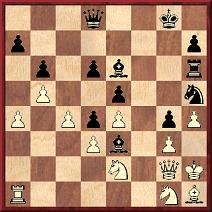
33...Nf4 34 Nxf4 exf4 35 Qa2 Rxh4+ 36 gxh4 Qxh4+ and Black wins.
Source: Chess World, June 1951, pages 113-114.
Karlis Ozols - K. Reintals
Australian Championship, Brisbane, 1951
King’s Gambit Accepted
1 f4 e5 2 e4 exf4 3 Nf3 Nf6 4 Nc3 Nh5 5 Bc4 d6 6 d4 Be7 7 O-O O-O 8 Ne1 g6 9 Be2 Nf6 10 Bxf4 d5 11 e5 Ne8 12 Bh6 Ng7 13 Nd3 Re8 14 Bxg7 Kxg7 15 Nf4 c6 16 Bd3 Nd7 17 Qf3 Rf8 18 Rae1 Nb6
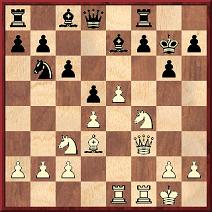
19 Nh5+ Kg8 20 Nf6+ Bxf6 21 exf6 Be6 22 Qf4 Nd7 23 Re3 Kh8 24 Bxg6 Rg8 25 Bxh7 Rg4 26 Qh6 Qf8 27 Qh5 Rxg2+ 28 Kxg2 Nxf6 29 Rxf6 Qg7+ and Black resigned in view of 30 Rg3.
Source: Chess World, June 1951, pages 118-119.
Next, from the same event, ‘a rollicking game’ which is ‘another example of Ozols’ special variant of the Dutch Defence’.
G.E. Berzzarins – Karlis Ozols
Australian Championship, Brisbane, 1951
Dutch Defence
1 d4 f5 2 c4 Nf6 3 Nc3 g6 (Annotating a later Ozols game which opened the same way, W.J. Geus wrote on page 140 of the July 1960 Chess World, ‘Originally tried in Russia, now completely adopted by Ozols, who deserves to have his name attached to this variation.’) 4 g3 Bg7 5 Bg2 Nc6 6 e3 O-O 7 Nge2 d6 8 O-O e5 9 Bxc6 bxc6 10 dxe5 Ng4 11 exd6 cxd6 12 Nd4 Qe8 13 Rb1 g5 14 Nf3 Qg6 15 Bd2 f4 16 exf4 gxf4 17 Nh4 Qh5 18 Ne4 Bf5 19 Nxd6 Bxb1 20 Qxb1 fxg3 21 hxg3
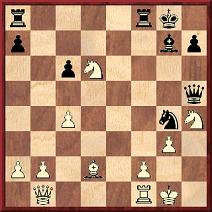
21...Nxf2 22 Rxf2 Rxf2 23 Kxf2 Qc5+ 24 Kg2 Qxd6 25 Bf4 Qd4 26 Nf5 Qxc4 27 Nxg7 Qd5+ 28 Kh2 Kxg7 29 Qc1 Re8 30 Qc3+ Kg8 31 Be3 Re5 32 g4 Re4 33 Qc5 Qxc5 34 Bxc5 Re2+ and Black won.
Source: Chess World, May 1952, page 113.
On page 1 of the January 1952 Chess World M.E. Goldstein wrote: ‘With his delicate sense of position and superlative end-game technique, Ozols impressed me [at the 1951-52 Australian Open] as a polished master with but one psychological weakness, a tendency to repeat certain openings of slightly inferior theoretical value’. Goldstein also said that Purdy, Steiner, Koshnitsky, Ozols, Endzelins and Hanks ‘form a band of six who could assure Australia of victory in a six boards match against any countries in the world except Russia, USA and Yugoslavia’.
H. Andreasson – Karlis Ozols
Pietzcker Tourney (Australian Open), 1953-54
Pirc Defence
1 e4 d6 2 d4 g6 3 Nc3 Bg7 4 Be3 Nf6 5 Be2 O-O 6 Qd2 Nc6 7 O-O-O Ng4 8 Bxg4 Bxg4 9 f3 Bd7 10 Bh6 Bxd4 11 Bxf8 Qxf8 12 Nge2 Bg7 13 g4 Ne5 14 Qe3 b5 15 h4 b4 16 Nd5 Nc4 17 Qb3 Nxb2 18 Rd4
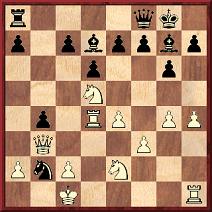
18...c5 19 Qxb2 a5 20 Qb3 cxd4 21 Nb6 Be6 22 Nd5 Qd8 23 Rd1 Bxd5 24 exd5 Qb6 25 Qd3 Qc5 26 Qe4 a4 27 Nxd4 b3 28 axb3 a3 29 b4 Qxb4 30 Nb3 Qxe4 31 fxe4 a2 32 White resigns.
Source: Chess World, February 1954, pages 38-39.
The following game was on pages 3-4 of the January 1955 Chess World, which commented:
‘… Lazare was never able to get counter-play, and the way Ozols steadily increased his advantage in space right up to boa-constrictor stage was most instructive.’
Karlis Ozols – S. Lazare
Australian Championship, Perth, 1954-55
King’s Indian Defence
1 d4 Nf6 2 c4 g6 3 Nc3 d6 4 e4 e5 5 d5 Bg7 6 f3 O-O 7 Bg5 Nbd7 8 Qd2 a5 9 g4 Nc5 10 h4 Qd7 11 h5 Ne8 12 Bh6 f6 13 hxg6 hxg6 14 O-O-O Kf7 15 Bxg7 Nxg7 16 Nge2 Qe7 17 Rh7 Bd7 18 Qh6 Rg8 19 Ng3 Qf8 20 Be2 Rh8 21 Rh1 Rxh7 22 Qxh7 Qg8 23 Qh6 Ne8 24 f4 Qg7 25 f5 Qxh6+ 26 Rxh6 g5
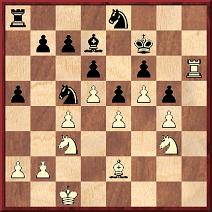
27 b3 Ng7 28 Kb2 Rg8 29 Rh7 Kf8 30 a3 Be8 31 b4 axb4 32 axb4 Na6 33 Kb3 Nb8 34 c5 dxc5 35 bxc5 Nd7 36 Kb4 Bf7 37 Bc4 Ke8 38 Nb5 Kd8 39 Nxc7 Nf8 40 Rh1 Nd7 41 Ne6+ Kc8 42 Rh7 Bxe6 43 fxe6 Nf8 44 Rh6 Ne8 45 Nf5 Kb8 46 d6 Resigns. ‘Masterly utilization of advantage in space.’
Ortvin Sarapu – Karlis Ozols
Australian Championship, Melbourne, 1957
French Defence
1 e4 e6 2 d4 d5 3 e5 c5 4 c3 Nc6 5 Nf3 Qb6 6 a3 c4 7 Be2 Bd7 8 Nbd2 Be7 9 O-O f5 10 exf6 Bxf6 11 Re1 Nge7 12 Bf1 O-O 13 b3 Nxd4 14 cxd4 Bxd4 15 Rb1 Bxf2+ 16 Kh1 c3 17 Nc4 dxc4 18 Qxd7 Bxe1 19 Qxe7 cxb3 20 Bc4 Rae8 21 Qg5 Rxf3 22 gxf3 b2 23 Bf4 c2 24 Be5
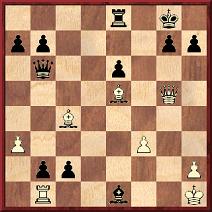
24...Qc7 25 Bd3 c1(Q) 26 Bxh7+ Kxh7 27 Qh5+ Qh6 28 Qxh6+ gxh6 29 Bxc7 Bc3 and Black won.
This game is annotated on pages 138-139 of C.J.S. Purdy’s Fine Art of Chess Annotation and Other Thoughts, compiled and edited by Ralph J. Tykodi. Sarapu gained revenge two years later in a tournament in Sydney, a game he included on pages 29-30 of his autobiography ‘Mr Chess’ The Ortvin Sarapu Story.
A curiosity from this period was Ozols’ game against Basta in the 1958-59 Australian Championship in Sydney. As noted on pages 61 and 72 of the March 1959 Chess World, Basta secured a draw under the 50-move rule in a middle-game position in which both players still had all their pawns.

Karlis Ozols
Under the heading ‘Wizard Strategy by Ozols’, the next game was published on pages 4-5 of the January 1963 Chess World. It may also be found in the above-mentioned Tykodi book (pages 149-150).
Gregory Simon Koshnitsky – Karlis Ozols
Australian Championship, Perth, 1962-63
Dutch Defence
1 Nf3 f5 2 d4 Nf6 3 g3 g6 (‘The Dutch Indian or Leningrad System is known in Australia as the Ozols Dutch.’) 4 Bg2 Bg7 5 c4 d6 6 O-O Nc6 7 d5 Ne5 8 Qb3 Nf7 9 Be3 O-O 10 Nc3 Ng4 11 Bd4 Nge5 12 Rad1 Kh8 13 e4 Nxf3+ 14 Bxf3 Ne5 15 Bg2 f4 16 f3 Bd7 17 Ne2 g5 18 g4 b6 19 Qc3 a5 20 b3 Qe8 21 a3 h5 22 h3 Qg6 23 Rf2 Qh6 24 Bf1 Bf6 25 Nc1 Qg7 26 Rdd2 Kg8 27 Ne2 Kf7 28 Bxe5 Bxe5 29 Nd4 Rh8 30 Qd3 Rh7 31 Nf5 Qh8 32 Rfe2 hxg4 33 fxg4 Qf6 34 Bg2 Rhh8 35 Kf1
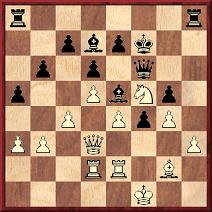
35...b5 36 cxb5 a4 37 Rc2 Rhc8 (‘Ozols is particularly good at recognizing when time is not of vital importance.’) 38 bxa4 Rxa4 39 b6 cxb6 40 Rxc8 Bxc8 41 Qb3 Ra8 42 Kf2 Bd4+ 43 Kf3 Bc5 44 a4 Qe5 45 h4 Bd7 46 hxg5 Rxa4 47 g6+ Kxg6 48 White resigns.
[Addition on 18 January 2015: the game was played on 4 January 1963. See the reference below to the tournament report by Geus.]
Karlis Ozols – Otto Weber
Melbourne (Pre-Zonal Quadrangular), 1963
King’s Gambit Accepted
1 e4 e5 2 f4 exf4 3 Nf3 Be7 4 Bc4 Nf6 5 e5 Nh5 6 O-O O-O 7 Nc3 d6 8 d4 Bg4 9 Nd5 dxe5 10 dxe5 Bc5+ 11 Kh1 Nc6 12 Qe1 Re8 13 Nxf4 Bxf3
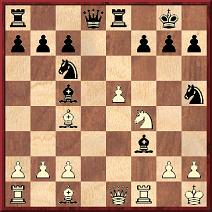
14 e6 (‘I wonder how many lesser brains would recapture automatically. This is masterly play.’ – E.A. Basta.) 14...Bxg2+ 15 Nxg2 fxe6 16 Rf5 Qd4 17 Bxe6+ Rxe6 18 Qxe6+ Kh8 19 Bg5 Qxb2 20 Re1 Bf8 21 Bc1 Qxc2 22 Rxh5 Rd8 23 Rd5 Rxd5 24 Qxd5 h6 25 Qf7 Be7 26 Nf4 Kh7 27 Qb3 Qf2 28 Qd3+ Kg8 29 Qe2 Qh4 30 Ng6 Qf6 31 Nxe7+ Nxe7 32 Qxe7 Qf3+ 33 Kg1 Qg4+ 34 Kf2 Qf5+ 35 Kg3 Qg6+ 36 Kh4 Resigns.
Source: Chess World, June 1963, page 93.
It was also in 1963 that Ozols won a tournament in Melbourne (+6 –0 =1) ahead of Alexander Kotov, whom he beat in their individual game:
Karlis Ozols – Alexander Alexandrovich Kotov
Melbourne, 1963
English Opening
1 c4 d6 2 g3 g6 3 Bg2 Bg7 4 Nc3 e5 5 e3 Ne7 6 Nge2 O-O 7 O-O Nbc6 8 Nd5 f5 9 d3 Kh8 10 Nec3 g5 11 f4 gxf4 12 gxf4 Ng6 13 Qh5 exf4 14 Nxf4 Nxf4 15 Rxf4 Ne5 16 Rh4 h6 17 e4 Ng4 18 Nd5 c6
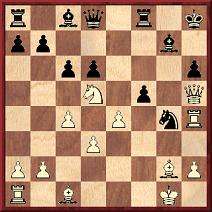
19 Rxg4 fxg4 20 Bxh6 Kg8 21 Bg5 cxd5 22 Bxd8 Rxd8 23 Qxd5+ Kh8 24 d4 Bd7 25 Qh5+ Kg8 26 e5 Be6 27 Be4 Rd7 28 d5 Bf7 29 Qh7+ Kf8 30 Qf5 Re7 31 e6 Rc8 32 Bd3 Bxb2 33 Rf1 Bd4+ 34 Kh1 Rcc7 35 Qxg4 Resigns.
Source: Chess World, September 1963, page 130, October 1963, pages 154-156, and November 1963, page 164.
In later years, Ozols concentrated on correspondence chess, not altogether surprisingly if it is recalled that pages 184-185 of the November 1962 Chess World had commented, ‘his trouble is nerves’ and that ‘if Ozols could concentrate solely on fighting his games, and not worry over grievances, his results would do more justice to his mastery’. He was awarded the International Correspondence Master title by FIDE in 1972. Our final game is a specimen of his postal play which is to be found in a number of databases:
Karlis Ozols – Donnelly
Correspondence Olympiad, 1987
King’s Indian Defence
1 c4 Nf6 2 Nc3 g6 3 e4 d6 4 d4 Bg7 5 f3 c6 6 Be3 a6 7 a4 a5 8 e5 Nfd7 9 f4 Na6 10 Nf3 Nb4 11 Be2 Nb6 12 h3 Bf5 13 Rc1 f6 14 exf6 exf6 15 d5 c5 16 O-O Qe7 17 Bf2 O-O-O 18 Re1 Qf7 19 Nb5 Bf8 20 Bf1 Rg8
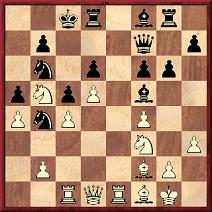
21 Nfd4 cxd4 22 Qxd4 Nd7 23 Qa7 Na6 24 Qa8+ Nab8 25 Qxa5 Nc5 26 Na7+ Kd7 27 b4 Resigns.
Ozols has never been prosecuted for war crimes. A detailed enquiry into his wartime record was carried out in Australia by a Special Investigations Unit, which concluded that he was ‘the highest ranking alleged war criminal living in Australia’. The Unit prepared detailed evidence against him, on which the report by The Australia/Israel Review was to draw extensively, and in June 1992 the Senior Counsel advised the Director of Public Prosecutions that a prima facie case existed against Ozols concerning war crimes and genocide. However, that same month the Federal Government shut down the Unit. The Director of Public Prosecutions wished to continue, but was stopped by the Attorney General. The case was closed.
For his part, Ozols refused to talk to the Review. In a 1979 interview he stated that he had been in Riga when the Germans had arrived in 1941, that former officers of the Latvian reserve had been asked to offer their services and that he had merely carried out guard duties.
Acknowledgement for a copy of the Australia/Israel Review report: Professor W.D. Rubinstein of the University of Wales, Aberystwyth.
The above article first appeared at the Chess Café in 1988.
From page 117 of Wonders and Curiosities of Chess by Irving Chernev:
‘The fastest tournament players have been Zukertort, Charousek, Janowski, Dake and Capablanca.’
To judge by page 34 of the December 1941 CHESS, a likely addition would be F. Apscheneek (or Apšenieks):
‘He was a remarkably fast players, against whatever class of opposition. In the second round of the first Kemeri tournament, he consumed only about 15 minutes over his entire game against Alekhine; the latter took over two hours, the game being drawn in 33 moves.’
Documentation is requested regarding the above players or others.
(1728)
K. Ozols (Thomastown, Australia), a participant in the Kemeri, 1937 tournament, informs us:
‘Fritz Apšenieks was a brilliant chess tactician. He played very fast, but in complicated positions was always able to find the right move. I could not confirm or deny the story concerning his game in Kemeri with Alekhine.
It is interesting that as Alekhine, during the Kemeri tournament, was preparing for his rematch with Max Euwe, he abstained from all alcoholic drink, unlike Apšenieks, who dearly loved a glass of beer or vodka.’
(1760)
Karlis Ozols died in Melbourne in March 2001. As regards his date of birth, in June 2005 Maurice Carter (Fairborn, OH, USA) confirmed his agreement with 9 August 1912, adding that confusion between August and September had indeed arisen as suggested in our article.
In January 2008 (C.N. 5393) Russell Miller (Camas, WA, USA) informed us that the report by Alter and Kapel is now available on-line, at the website of the Australia/Israel & Jewish Affairs Council.

The above shot of Ozols is a detail from C.N. 7555.
Jonathan Berry (Nanaimo, BC, Canada) has forwarded us a number of postcards from a game which he played against Ozols in the tenth Correspondence Chess Olympiad (1983-84):
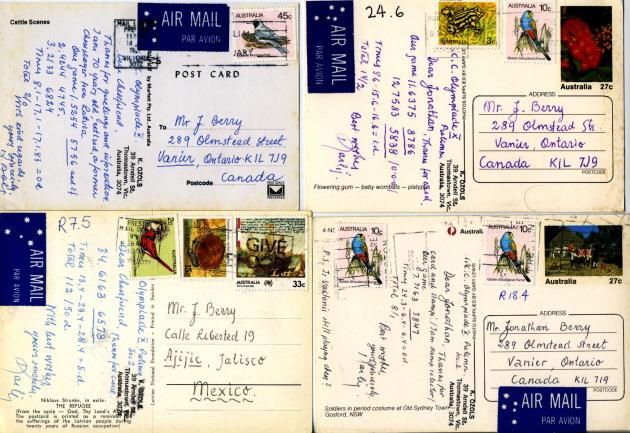
(7581)
Ozols appears in a group photograph (Hanau, 1947) on page 21 of Elmars Zemgalis Grandmaster without the Title by John Donaldson (Berkeley, 2001), as well as in a picture taken at the 1952-53 Australian Championship in Hobart published opposite page 79 of Australian Chess at the Top by Cathy Chua (Oaklands Park, 1998).
The date of the game above against Koshnitsky, 4 January 1963, has been provided by Olimpiu G. Urcan (Singapore) from page 5 of the seventh-round report produced by the West Australian Chess Association and edited by W.J. Geus.
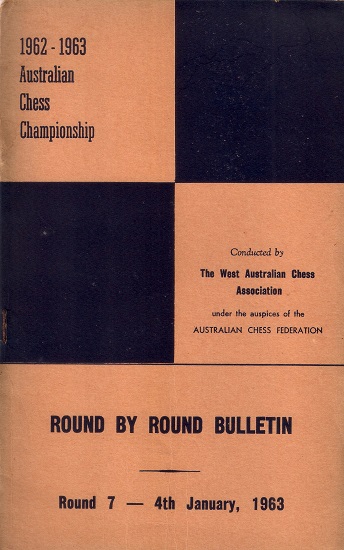
A rare specimen of a game annotated by Karlis Ozols is on pages 66-67 of Chess World, March-April 1967:
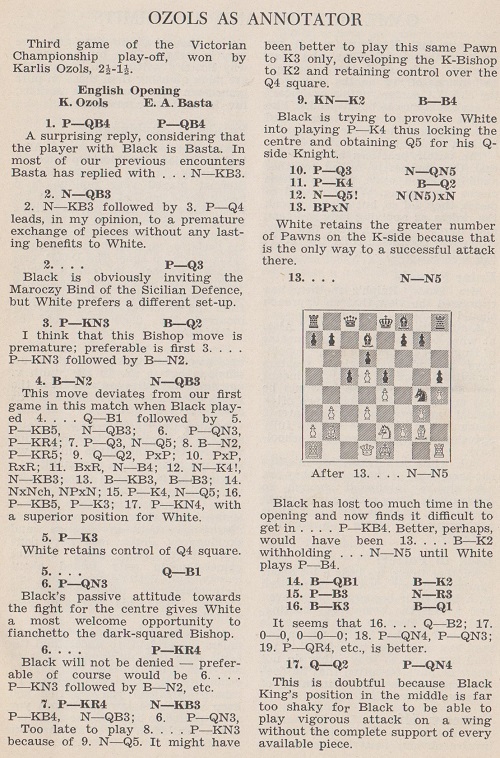
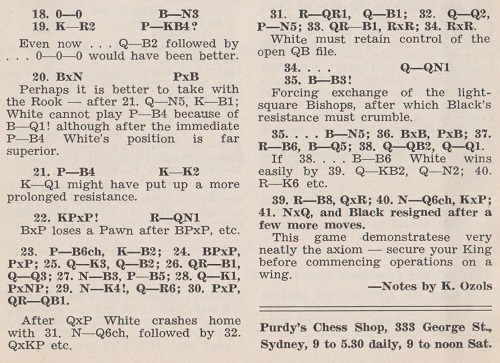
1 c4 c5 2 Nc3 d6 3 g3 Bd7 4 Bg2 Nc6 5 e3 Qc8 6 b3 h5 7 h4 Nf6 8 Bb2 e5 9 Nge2 Bf5 10 d3 Nb4 11 e4 Bd7 12 Nd5 Nbxd5 13 cxd5 Ng4 14 Bc1 Be7 15 f3 Nh6 16 Be3 Bd8 17 Qd2 b5 18 O-O Bb6 19 Kh2 f5 20 Bxh6 gxh6 21 f4 Ke7
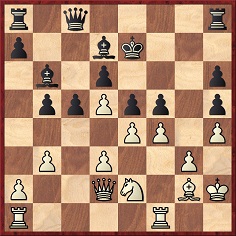
22 exf5 Rb8 23 f6+ Kf7 24 fxe5 dxe5 25 Qe3 Qc7 26 Rac1 Qd6 27 Nc3 c4 28 Qe1 cxb3 29 Ne4 Qa3 30 axb3 Rbc8 31 Ra1 Qf8 32 Qd2 b4 33 Rac1 Rxc1 34 Rxc1 Qb8 35 Bf3 Bg4 36 Bxg4 hxg4 37 Rc6 Bd4 38 Qc2 Qd8 39 Rc8 Qxc8 40 Nd6+ Kxf6 41 Nxc8 and wins.
(9996)
Karlis Ozols – John Nugent Hanks
Melbourne Olympic Tourney, 3 January 1957
Dutch Defence
1 d4 f5 2 Bg5 Nf6 3 Nd2 e6 4 e4 fxe4 5 Nxe4 Be7 6 Ng3 O-O 7 Bd3 Qe8 8 h4 Nc6 9 c3 e5 10 d5 Nd8 11 Qc2 h6 12 O-O-O Nf7 13 Bg6 Qd8
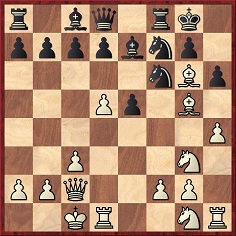
14 Nf5 d6 15 Nf3 Nh8 16 Bh7+ Kf7
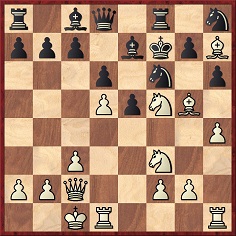
17 Nxh6+ gxh6 18 Bxh6 Bg4 19 Ng5+ Ke8 20 Bxf8 Bxd1 21 Bg6+ Kxf8 22 Ne6+ Kg8 23 Rxd1 Qd7 24 Bf5 e4 25 g4 c6 26 g5 cxd5 27 gxf6 Bxf6 28 Rxd5 Bxh4 29 Qxe4 Bf6 30 Kb1 Qc6 31 Nd4 Bxd4 32 Be6+ Kf8 33 Rf5+ Bf6 34 Rxf6+ Ke7 35 Qh4 Rf8 36 Rf7+ Kxe6 37 Qf6+ Kd5 38 Rxf8 Resigns.
Source: Chess World, April 1957, pages 95-96.
There were annotations by Robert Pikler, who concluded:
‘An excellent game by Ozols, played with dash and abandon.’
(10002)
From pages 243-244 of Chess World, November 1957:


On pages 174-175 of Chess World, August 1961 C.J.S. Purdy annotated a game which his son John lost to Ozols on board two of a match between Victoria and New South Wales played by teletype on 21 October 1960: 1 e4 c5 2 Nf3 g6 3 d4 Bg7 4 d5 d6 5 c4 Na6 6 Nc3 Bd7 7 a4 Nh6 8 Bf4 Ng4 9 Be2 O-O 10 Nd2 Ne5 11 Bg3 Nb4 12 O-O f5 13 f4 Ng4 14 Bxg4 fxg4 15 e5 Bf5 16 Nde4 a6 17 Qe2 Qc7 18 Nf2 Nc2 19 Rad1 Nd4 20 Qe3 Nc2 21 Qe2 Nd4 22 Qe3 Rae8 23 e6 Qb6 24 Qd2 Qb4 25 Rfe1 Qxc4 26 Nfe4 b5 27 Rc1 Nb3 28 Qc2 Nxc1 29 Qxc1 b4 30 Nd2 Qd3 31 White resigns.
To the Chess Notes main page.
To the Archives for other feature articles.
Copyright: Edward Winter. All rights reserved.